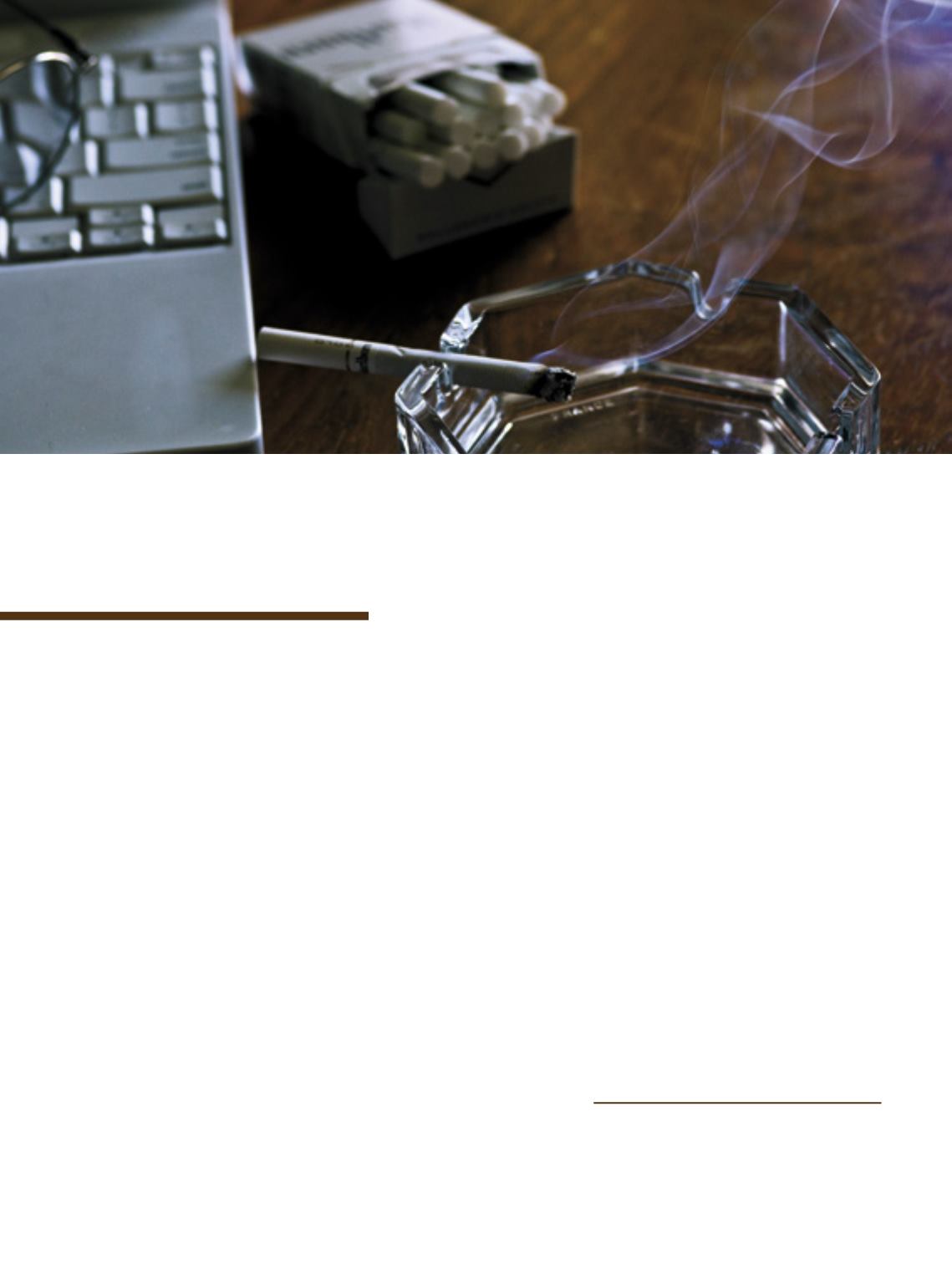
If in thepast smokingwas part of a social ritual which involved charmand satisfac-
tion, modernity is adding technology to thismoment of pleasure. Theway people en-
joy cigarettes is getting highly modernized in several countries in the world and gives
rise toapromising replacement of the conventional productwithelectronicgadgets.
This process is moving faster in Japan, the United States and Turkey, Europe-
an country that belongs to the group of the three biggest consumers of “heat-not-
burn” cigarettes. In Brazil, sales of this type of cigarettes are not allowed. In South
America, only Colombia has liberated its consumption.
Electronic cigarettes produce no smoke and need a smaller volume of tobacco.
Equally because of this, but particularly due to the actions and interventions of the
antismoking advocates. Because of economic questions and the greed of some
governments in raising taxes on cigarettes, global demand for cigarettes is on the
decline in the legal market. In 2016, for example, 5.505 trillion conventional ciga-
rettes were consumed in the world, 1.4% less than the volume in 2015, of around
5.585 trillion pieces. China alone consumes more than 2.5 trillion cigarettes a year.
The numbers that are taken as global reference were revealed by Shane Mc-
guill, consultant with Euromonitor International, European organism that con-
ducts consultancy and research on several agroindustrial products, and tobacco
is one of them. The presentation took place on 15th October 2017, during the an-
nual assembly of the International TobaccoGrowers’ Association (ITGA), inGreece.
According to him, the global conventional cigarettemarket reached the sumof
US$ 683 billion, with an average of US$ 2.50 per packet (just over R$ 8, by the Bra-
times
Scenarios suggest that global tobacco productionand
consumptionof conventional cigarettes are embarking ona
downward trajectory in the future, and supplymust adjust
Signs of the
zilian exchange rate in the first week of Septem-
ber 2017). More than five million people have
already adhered to heat-not-burn cigarettes,
which produce no smoke.
The expectation is for the new technolog-
ical model to account for 22% of the cigarettes
consumed in Japan, generating revenue of US$
8.7 billion. The United States (US$ 1.7 billion)
and Turkey (USS 1.3 billion) complete the podi-
um. One of the heat-not-burn brands boasts up-
wards of 3.7million clients.
BenícioAlbanoWerner,presidentoftheTobacco
Growers’ Association of Brazil (Afubra), and Romeu
Schneider, secretary of the association and presi-
dent of the Brazilian Tobacco Sectoral Chamber, at-
tended the international event. Werner observes
that the sectoral entities cherish great expectations
aboutthetechnologicalinnovationofthecigarettes,
withregardtotheindustries,byvirtueofthedimen-
sionofdemandfortobaccointhefuture.
“There is no doubt about it, the sector and the
world are going through changes that take place
faster and faster”, he says. “Therefore, we need to
pay heed to the demands regarding volume and
typeoftobaccothatispursued bythemarketsoas
todimensionthetobaccocropsinaccordancewith
theneeds, ifwewant tocontinue competitive”.
Shareof electronic
cigarettes ison the
rise in theworld, say
Euromonitor sources
Inor Ag. Assmann
50


